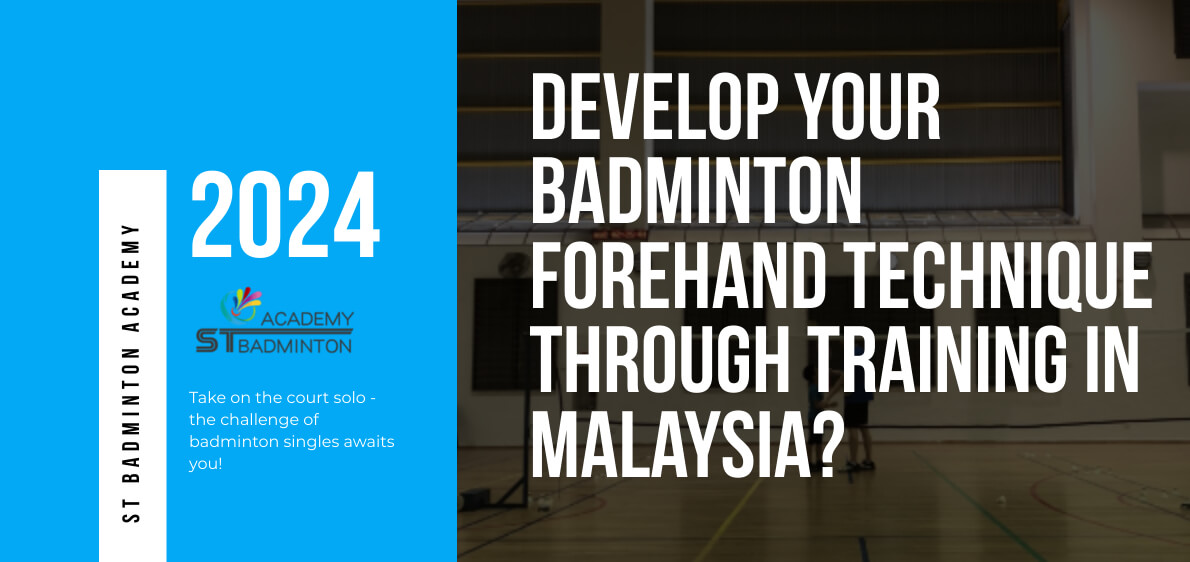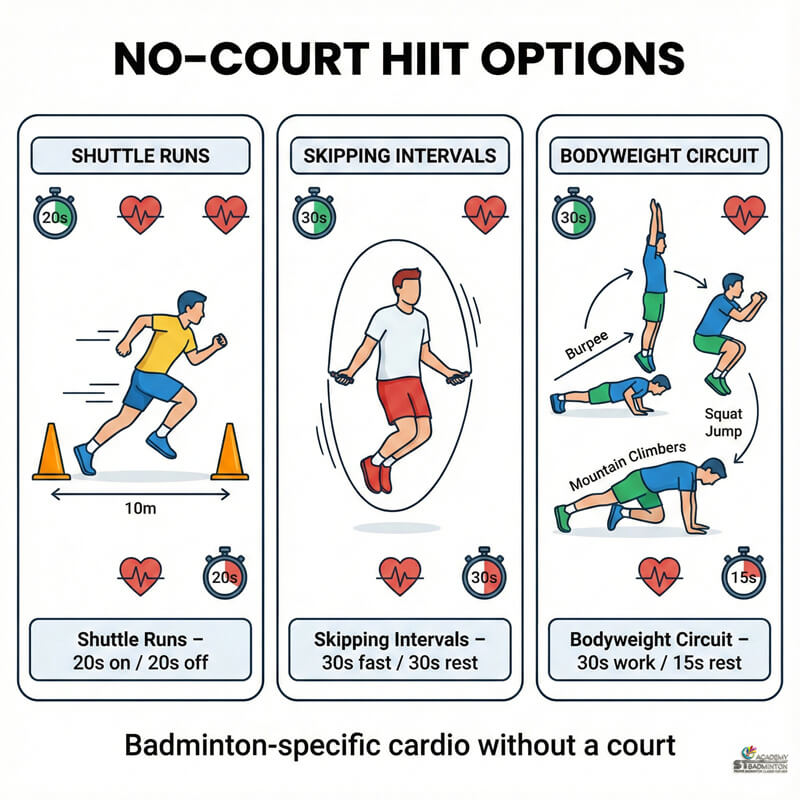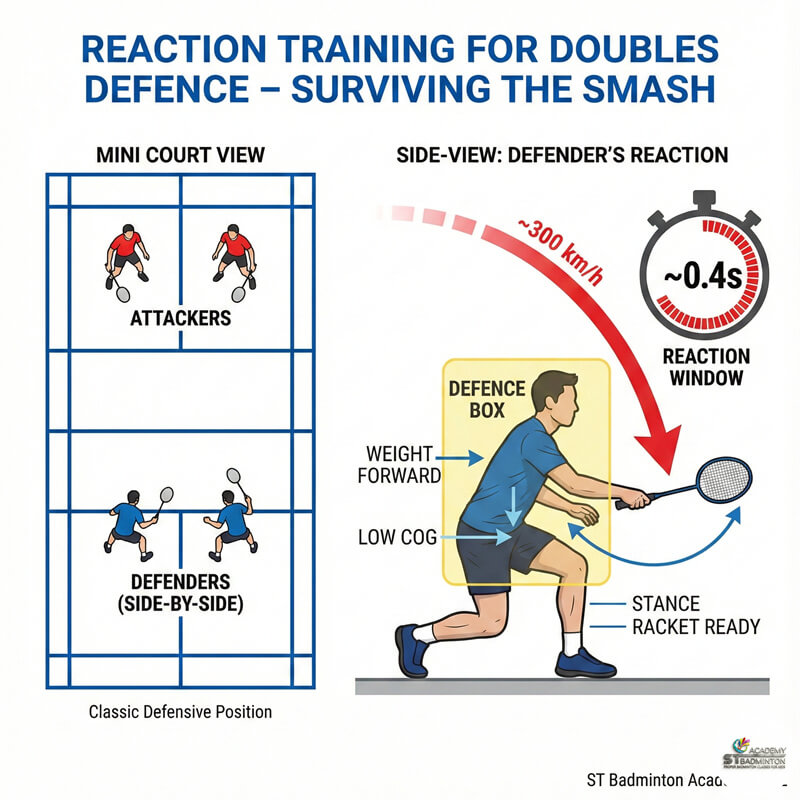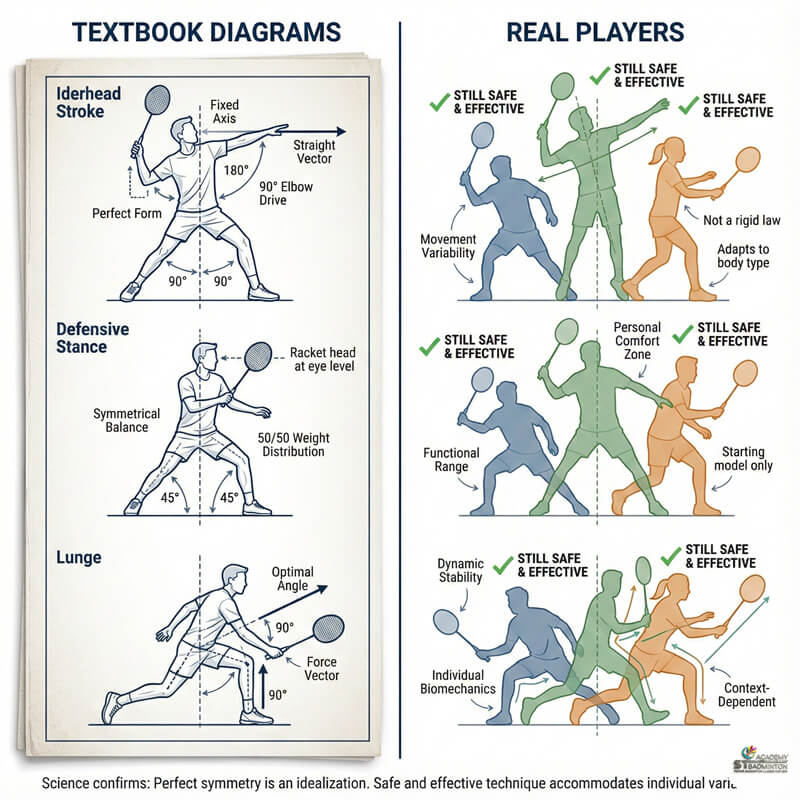Welcome to ST Badminton Academy’s badminton training in Malaysia! As your badminton coach, I’m here to tell you about how important it is for you to develop your forehand technique through regular training. Forehand shots are essential in any good badminton game and mastering them will make a huge difference to your performance on the court.
With enough practice and dedication, you can take your skills from beginner level all the way up to professional standard. In this article, I’ll be going over some of my top tips for improving your forehand technique so that you can become an unstoppable force on the courts!

Setting Realistic Goals
As a badminton coach, I like to use the metaphor of gardening when talking about developing your forehand technique. Just like you have to nurture and cultivate your garden before it will grow into something beautiful and bountiful, so too must you apply that same level of dedication in order to develop your forehand skills. Setting realistic goals and staying motivated are two key elements of this process.
The first step is setting achievable goals for yourself. Start by understanding where you currently stand with regards to your forehand form, power and accuracy. Then create a plan for how you want to improve over time – whether that’s increasing footwork speed or improving shot placement consistency. Writing down these goals can help keep them top-of-mind and make sure that they stay on track as you progress throughout your training journey.
Staying motivated is another integral part of honing any skill, especially if there’s no immediate gratification from achieving success early on. To stay focused on the long game, break up bigger goals into smaller ones; celebrate each victory along the way – even small successes count!
Also don’t forget to take breaks every now and then – reward yourself with some rest after hitting milestones! With the right combination of focus and determination, you’ll be well on your way towards mastering your forehand technique in no time. Onward to practicing proper footwork!
Practicing Proper Footwork
Now that you have set realistic goals for yourself, it’s time to focus on proper footwork. It is essential that your feet move properly in order to maximize the power of your forehand stroke and ensure accurate placement of the shuttlecock. Developing good posture and balance as you move around the court will be key when developing a strong forehand shot.
Start by ensuring correct posture while standing still or moving forwards and backwards. Your racket should stay close to your body with your hitting arm extended outward while holding the racket correctly. The grip must also feel comfortable so practice adjusting until you find the right hold for your hand size and control of the racket. Make sure both arms remain relaxed throughout movements but ready for action if needed.
Focusing on controlling the movement of your feet rather than just running back and forth can improve coordination between your lower body muscles and upper body muscles used during shots. Practice various types of jumps to help build strength, agility, speed, and flexibility as well as incorporate different kinds of footwork into drills such as quick steps or side-to-side shuffles which are important skills to master in badminton.
With improved technique combined with correct posture and better racket control, you’ll start seeing improvements in no time! Let’s now look at how we can develop an optimal grip for executing powerful forehands.
Developing An Optimal Grip
| Tips for Developing an Optimal Grip in Badminton |
|---|
| 1. Grip Firmly, Not Too Tightly: |
| – Hold the racket firmly, finding a balance between tight and loose grip. |
| 2. Hands Placement: |
| – Bottom hand slightly above the top hand, both below the racket’s head. |
| 3. Control and Comfort: |
| – Ensure good control over the racket; it should feel comfortable, not too loose or tight. |
| 4. Practice Hand Placement: |
| – Experiment with grip and hand placement to find what works best for you. |
| 5. Take Your Time: |
| – Allow time to perfect the grip; it may take a few tries, but the effort is worthwhile. |
| 6. Focus on Control: |
| – Emphasize the importance of the right grip and hand placement for optimal racket control. |
| – Encourage players not to rush and prioritize finding the perfect grip. |
Gripping The Racket
Hey there! It’s time to start developing that forehand technique of yours and the first step is all about getting a good grip on your racket. That’s why it’s important for you to practice drills with your racket in hand, so you can get used to having an optimal grip.
This will help develop muscle memory, so when game day comes around you won’t have to worry about re-gripping your racket before every hit. Plus, this way you’ll be able to focus more on improving your shot accuracy rather than worrying about maintaining a steady grip. So don’t forget: practice makes perfect! Get out there and take some swings with your racket everyday until gripping it properly becomes second nature.
Adjusting Hand Placement
Once you’ve gotten used to having an optimal grip on your racket, it’s time to start adjusting the placement of your hands. This is important for improving flexibility and accuracy in your shots – something that can make or break a match! Make sure you’re tracking your results as you adjust hand placement so you can get a better understanding of how different grips affect the power and direction of your strokes.
It’ll take some experimentation but be patient and keep at it until you find what works best for you. With practice, soon enough your forehand technique will be up to par with even the most experienced players out there! Other than choosing a good racket and also remember to choose the best racket restring in Malaysia.
Gripping With Control
Now that you’ve got a handle on the basics of gripping your racket, it’s time to focus on controlling your grip. That means making sure you’re using good body mechanics and following through with each shot. This will give you greater accuracy when striking the shuttlecock and allow for more powerful strokes without sacrificing control.
Don’t forget to adjust your grip depending on whether you’re hitting forehand or backhand shots – this is essential for improving your performance. With some practice, soon enough you’ll be able to make quick adjustments to ensure your grips are giving you maximum control over every shot!
Executing The Right Swing
For many players, developing a powerful forehand swing can be complicated. It’s essential to understand the importance of coordinated timing and muscle memory in order to get it right. Here are some tips that will help you master your forehand technique:
| Tips for Mastering the Forehand Technique in Badminton |
|---|
| Timing: |
| – Coordinate swings with body motion and shuttlecock flight. |
| – Focus on precise start and end points for maximum power. |
| – Use quick footwork and upper-body rotation for coordination. |
| Muscle Memory: |
| – Practice repetitively for consistent form development. |
| – Maintain good posture throughout the entire swing. |
| – Visualize perfect forehands before each practice or match. |
Taking note of these tips will make sure that you’re able to build up your badminton forehand technique through regular training sessions. To fine-tune this skill further, let’s look at implementing the right stroke mechanics…
Implementing The Right Stroke Mechanics
Having the right stroke mechanics is essential for any successful forehand in badminton. Making sure your body and racket form a harmonious partnership – that’s what will really drive your performance to its peak! Finding balance between your arms, legs, and core muscles are crucial to getting it just right.
Getting into the correct posture when playing badminton starts with keeping both of your feet flat on the ground; this allows you to move quickly and efficiently from one side of the court to another. After finding your balance, make sure to keep your chest open towards the net at all times while maintaining a slight bend in your knees. Keeping these elements together enables you to generate maximum power while still staying agile throughout your shots.
To truly master the art of hitting a powerful yet accurate forehand shot, practice forming an arching motion as if you were drawing circles on either side of yourself with the racket head. This helps ensure that every hit has sufficient torque behind it so that each shot travels far enough into their opponent’s half of the court. When done correctly, you’ll be able to surprise even those who have been playing much longer than you! With consistent practice and dedication, soon you’ll find yourself mastering this skill.
Developing Strength And Endurance
Now that we have discussed the importance of proper stroke mechanics, let’s focus on how to develop strength and endurance for your badminton forehand. This is an essential part of becoming a better player because it will allow you to hit with more power and accuracy.
One way to build muscle and power in your badminton forehand is by doing specific exercises that target muscles used while playing. An example would be using resistance bands or weights to do shoulder presses or chest flys which target the deltoid and pectoral muscles used when hitting a backhand shot.
You could also use medicine balls or kettlebells to perform explosive movements such as slams or rotational throws which help activate fast-twitch fibers in your arm muscles. Additionally, performing bodyweight exercises like pushups, pull ups, planks, and burpees can also help strengthen all areas of the body needed for powerful shots.
Moreover, developing power endurance should also be a priority for any aspiring badminton players looking to improve their forehand technique. This means having enough stamina so that you are able to execute high quality shots throughout an entire match without getting fatigued too quickly.
To do this, try incorporating interval training into your regular workout routine which involves alternating between periods of intense activity followed by brief rest periods. Doing this repetitively helps increase muscular endurance allowing you to sustain longer rallies during matches.
By taking these steps towards improving your physical capabilities, you’ll find yourself executing stronger shots with greater consistency on court – setting yourself up for success both now and in the future! Moving forward then, let’s discuss some mental tactics we can implement alongside our physical efforts in order to unlock even further improvements…
Mental Training And Visualization
I’m sure you want to develop your badminton forehand technique, so let’s talk about how to do it through mental training and visualization. First, we need to work on developing a positive mindset – this will help you keep motivated and inspired to reach your goals.
Secondly, I want you to start visualizing your goals and the techniques you will use to get there. Lastly, once you have mastered the techniques, try to visualize yourself performing them successfully in a match. It will give you confidence and help you stay focused. Let’s get started!
Developing A Positive Mindset
It’s essential for badminton players to have a positive mindset if they want to develop their forehand technique. This means having encouraging self-talk, taking deep breaths and being mindful of how you’re feeling in the moment. Positive self-talk is a great way to boost your confidence when playing on court and can help you focus better during rallies. I suggest using affirmations like ‘I am capable’ or ‘I will do my best’, which can really make a difference in your performance.
Mindful breathing is also an important part of mental training – it helps keep stress levels low and keeps your body relaxed while playing. Before a match take some time out to practice deep breathing exercises, focusing on each inhale and exhale until you feel calmer. During games be aware of any tension that builds up in your body, as this could affect your movements and overall performance.
Visualization techniques are another powerful tool for badminton players looking to improve their technique; picturing yourself executing every stroke perfectly can actually help you achieve just that! Spend 5 minutes before each game envisioning the moves you plan to use, so that when it comes to executing them on court, everything feels more natural for you.
Visualizing Goals And Techniques
As a badminton coach, I always encourage my students to use visualization techniques. Visualizing goals and techniques before each game can help you focus on the task at hand and improve your body mechanics. When we take time out for visualizations, it helps us stay in control of our mental focus during the game.
It’s like taking a snapshot of what you want to do during the match, so when it comes time to execute those moves they feel more natural. This allows players to move more efficiently around the court and make better decisions as well!
Visualization Of Successful Performances
Visualizing successful performances is an essential part of any mental training program. It’s a great way to get into the competitive mindset and helps you focus on what needs to be done in order for success.
I always have my students practice focusing drills that help them visualize their desired outcomes before each game. This can include visualizations around body alignment, technique execution, and even specific shots they want to hit during the match. By doing this, my players are able to stay focused and execute better decisions throughout the match. Visualization is one of the most important mental tools we use as badminton coaches and it sets up our athletes for success!
Monitoring Your Progress
As a badminton player, one of the most important things to do is track your progress and be mindful of how you are improving. Keeping an eye on my forehand technique helps me stay focused, motivated, and ultimately reach my goals. Here’s some tips I use when tracking my development:
| Tips for Tracking Forehand Technique Progress in Badminton |
|---|
| 1. Record Video: |
| – Record practice sessions or games to analyze technique. |
| – Identify strengths and areas for improvement from footage. |
| 2. Keep a Journal: |
| – Document match results, coaching insights, and training notes. |
| – Use the journal to stay accountable and track your progress. |
| 3. Seek Feedback: |
| – Get input from peers or coaches on your forehand technique. |
| – Use feedback for both constructive criticism and motivation. |
| 4. Monitor Physical Health: |
| – Pay attention to body fatigue after each session. |
| – Adjust training intensity based on physical well-being. |
It’s important to not become discouraged if there isn’t immediate improvement in our game; instead focus on small daily wins and attempts at developing better technique slowly over time. With adequate dedication, consistent practice, and by monitoring our progress—we can all make big strides towards becoming better badminton players!
Frequently Asked Questions
What Is The Best Type Of Racquet To Use For A Forehand Shot?
Choosing the right badminton racquet for a forehand shot is crucial. A good quality, lightweight frame can help you improve your grip strength and footwork drills. As a coach, I recommend testing out different types of frames to get a feel for what works best for your technique.
Look for something with an even balance between power and control – this will give you more confidence when executing the perfect forehand shot!
How Often Should I Practice My Forehand Technique?
When it comes to developing your forehand technique, practice scheduling and mental focus are key. To make the most out of each session, I recommend that you practice your badminton forehand at least three times a week.
This frequency allows you enough time to rest while ensuring that you remain consistent with your training. Make sure to break down each component into smaller parts so that you can steadily increase your overall skill level. Also, be mindful of how long you practice; overworking yourself won’t help you in the long run! Finally, have fun with every session – maintaining an upbeat outlook will positively impact your mental focus and help keep things interesting during those longer drills.
Is There A Specific Diet I Should Follow To Improve My Forehand Power?
Ah, so you want to know the secret diet for improving your forehand power? Look no further! As a badminton coach, I can tell you that it’s not about eating any special food; it’s about proper stretching and mental focus. Forget about protein shakes or expensive supplements – those won’t do much for your technique. Instead, make sure you are doing dynamic stretches before each practice session and remain focused on perfecting your form while playing. I guarantee that with consistent effort, combined with proper nutrition and rest, you’ll be able to take your game to the next level in no time!
What Are The Best Drills To Improve My Forehand Accuracy?
The best drills to improve your forehand accuracy involve focusing on body mechanics and intensity. As a badminton coach, I recommend doing footwork drills that focus on balance, arm strength exercises such as wall slams, and using an agility ladder for quick changes in direction.
You should also practice regularly with a partner so you can adjust the speed of shots and work on precision. With regular practice at varying levels of intensity, you’ll be able to see significant improvements in your forehand accuracy over time.
Is There Any Specific Gear I Should Use To Improve My Forehand Technique?
Correcting your posture and footwork are two of the most important elements to developing a strong badminton forehand technique. To help, there’s some specific gear you can use that will give you an edge in practice.
Badminton racquets with lighter frames make it easier to move quickly, while specialized footwear designed for court sports provides extra stability when swinging or changing direction. You may also want to invest in a light-weight shuttlecock so you can focus on controlling the speed of each shot during drills. With these tools in hand, you’ll be able to get more out of every training session!
Conclusion
To finish off, I’d like to leave you with one last piece of advice. If improving your forehand technique is a priority for you, then consistency is key. It doesn’t matter how many hours or days you train; what matters most is that you consistently put in the work and practice regularly. To illustrate this point think of it like driving a car – if all you do is turn on the engine once every few weeks, then don’t expect to get very far!
It’s also important to remember that badminton requires skill as well as physical prowess. As such, make sure that when training your forehand technique, you’re not just focusing on strength but rather perfecting your form and accuracy first and foremost. A great way to do this is by repeating drills until they become second nature, while maintaining focus on core elements such as positioning and timing. With repetition comes mastery – so keep at it and soon enough those beautiful forehands will be flying past your opponents!





